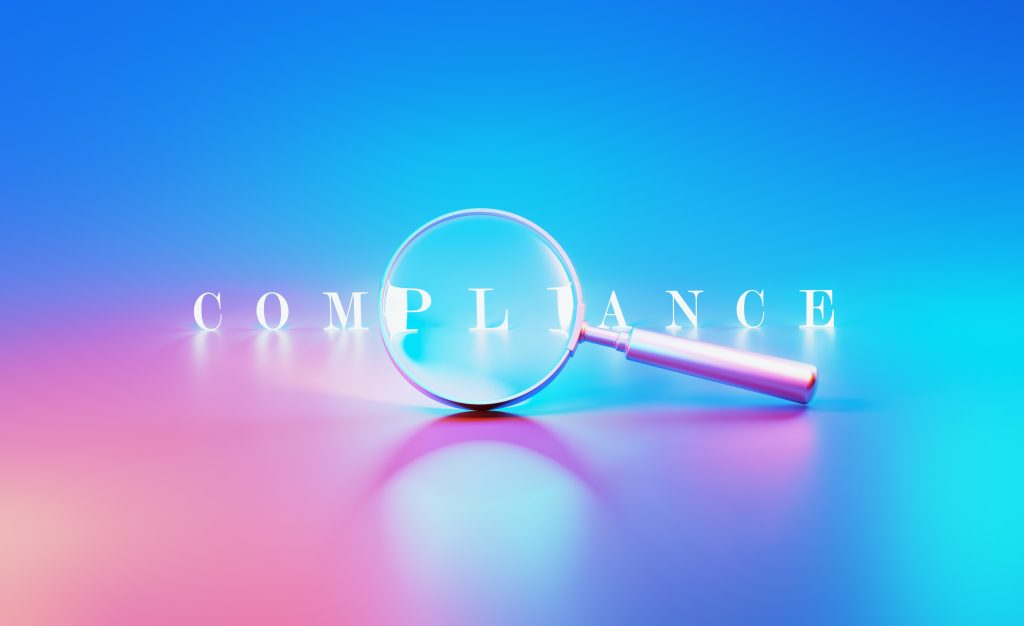The GAWDA Consultant Program is a GAWDA member benefit that is included as part of your member dues to the association. It is consistently rated as one of the most valuable member benefits that GAWDA provides. Between the four of them GAWDA’s consultants bring more than 100 years of industry-specific experience to the association.
With this being the first issue of 2024, we look back on lessons learned from last year and what we expect to see from a regulatory standpoint for the industry in 2024. GAWDA’s Consultants discussed the bevy of new legislation and proposed legislation and how it will impact members this year.
Thank you to Tom Badstubner, GAWDA’s FDA and Medical Gases Consultant, Marilyn Dempsey, DHS, EPA and OSHA Consultant, Mike Dodd, DOT Consultant, and Rick Schweitzer, Government Affairs and Human Resources Consultant, for lending their time and expertise to discuss these important topics. The following is a lightly edited transcript of that conversation.
WGT: This is our first issue of 2024. Our 4th Quarter Issue of Welding & Gases Today came out in October before the Annual Convention. Is there anything that has happened between the fourth quarter and now with the different agencies that members need to be updated on?
Tom Badstubner: It’s not really a change, as far as the FDA is concerned, but we are seeing more activity recently. We are seeing unusually persistent activity where the FDA is following up on earlier inspections, especially inspections that had some issues. This follow up activity is something they haven’t really done in many years. The FDA is alive and well, is the best way I can say it. They’re ramping up their inspection activity slowly.
WGT: Do you think that’s more of a return to normalcy after COVID or is there something else driving that activity?
Tom Badstubner: I think that’s exactly what it is. The FDA nearly stopped all domestic, face-to-face inspections during the pandemic.
WGT: Is there any particular area of focus or emphasis that is emerging? Any patterns?
Tom Badstubner: This won’t apply to all GAWDA members, but those members with gas chromatographs and medical gases should make sure their systems are compliant with the latest data integrity guidance from the FDA. We’ve published some information about that a few times over the past few years. If a member has any questions about their GC running in a conforming manner, they should reach out to me. I can give them the sample SOPs and the forms that will significantly help with FDA compliance.
WGT: Marylin, anything for OSHA or Homeland?
Marilyn Dempsey: Homeland Security is really quiet because they still have not received funding for CFAST, the Chemical Facility Anti-Terrorism Standard. They just ask that we keep our chemicals safe. There’s no regulation anymore, but it is in our best interest, as good citizens, to make sure that our chemicals are kept safe and that we keep track of them. Specifically, Zone A and Zone B products that should be kept under lock and key, from cradle to grave.
Another thing that happened that was very interesting, was a meeting of the Small Business Labor Safety Round Table, in late October. During this meeting, the National Labor Relations Board’s (NLRB) General Counsel, Jennifer Abruzzo, and the Assistant Secretary for OSHA, Douglas Parker, talked about how they’re going to get a Memo of Understanding between the NLRB and OSHA. They want to have, “Historic interagency coordination by enabling the NLRB and OSHA to closely collaborate by more broadly sharing information.” They want to share injury and inspection data – that made me sit up and take notice. The NLRB is not necessarily “for small business,” correct me if I’m wrong Rick.
Rick Schweitzer: No, it’s not. It has a very different area of jurisdiction than OSHA. OSHA has jurisdiction over workplace safety and protection for employees. NLRB has jurisdiction over unfair labor practices. That could involve safety issues, but it’s primarily economic issues of labor-management relations.
Marilyn Dempsey: They’re going to conduct cross training for staff at each agency, so they know how each other speak, partnering on investigative efforts, within the agency’s authority, and enforcing anti-retaliation provisions. This is going to be a very big topic in 2024. They’re doing it quietly, by putting this memorandum out.
WGT: This may not be relevant, but since you brought up the Secretary of Homeland Security, Rick, the Secretary of Homeland Security has been in the news recently as potentially being impeached. Were that to be successful, what would it mean for the agency?
Rick Schweitzer: Nothing. First of all, the House Republicans want to bring impeachment proceedings against the Secretary for, failure to secure the Southern border with Mexico. Even if they could get a partisan vote to impeach him in the House, he would never be convicted in the Senate. I think that’s highly, highly unlikely. It would allow the House Republicans, perhaps, a lot of talking points and perhaps even get them on the nightly news, although I doubt that. I don’t think it would have any real-world implications, because I don’t think the Senate would ever convict him. And, frankly, even if the Senate did convict him, the agency would continue to operate as it has and the next person in line or the new Secretary would have the authority to act or not act as he or she sees fit under the direction of the President. It’s not like it’s going to change the policies of the administration with regards to immigration.
WGT: So, it wouldn’t be anything that would affect GAWDA members?
Rick Schweitzer: No, I don’t think so.
WGT: Marylin, you talked about how the NLRB and OSHA are being affected. Are there any new trends like Tom is seeing with the FDA with OSHA? Any increase in site visits, anything of note?
Marilyn Dempsey: Among our members there hasn’t been an increase in site visits. However, OSHA is proposing a “worker walk around” rule, which would allow a third-party to come in and represent the employee. Both the employer and an employee representative can accompany the inspector. And, if you have a union shop, it’s usually the shop steward. What they’re trying to do with the worker walk around is to allow someone from the union shop, not necessarily employed by the employer under inspection. This person would come in and be part of the inspector’s attendees. They likely don’t know the business and they may say things that would make the employer look bad in the eyes of the inspector. OSHA has not shown how this rule would improve the safety aspect of this inspection and there have been comments submitted against this rule.
Rick Schweitzer: They have to do a cost-benefit analysis and show that the benefits outweigh the cost. And then, they also have to do a small business impact analysis too, to show if this has any impact on small entities.
WGT: If it were to happen, what would be the impact on GAWDA members in your opinion?
Marilyn Dempsey: Then anyone that has a union shop is open to have their shop steward ask someone from the union hall to come in and walk through the inspection. And they can comment throughout the walk.
WGT: Rick, I know there have been a lot of problems in Washington happening, but as they pertain to GAWDA members, is there anything worth worrying about?
Rick Schweitzer: Following on Marylin’s comments, I’m seeing a couple of different areas where the Biden Administration is trying to pursue labor’s agenda and the environmental agenda, as well. Obviously, the NLRB and OSHA MOU are part of the labor agenda, and the OSHA walk around is as well.
I’m seeing things like an attempt to override the preemption of meal and rest break rules applied to truck drivers in California and Washington and potentially other states. The Department of Transportation now has before it a petition to waive the Trump Administration Preemption Determination that those states could not impose meal and rest break rules on top of the driver hours of service rules in California and in Washington and 18 other states that have these kinds of rules. That’s something that the DOT is going to consider in the next few months.
We’re also looking at potential changes to the eligibility for overtime rules in the Department of Labor. They want to increase the threshold salary to about $56,000, which would add 3.6 million employees to the eligibility roles for overtime under the Fair Labor Standards Act. That’s a proposed rule now that will probably be made a final rule this year.
Then, we have the Federal Trades Commission’s proposed rule to ban or severely limit noncompete agreements and the FTC has indicated that, if this goes through as a final rule, it will affect 3-4 million additional workers who would then no longer be subject to non-compete agreements with their employers when they leave that employment. They would be free to pursue whatever jobs or positions, even competing jobs in the marketplace. Those are the Administration’s labor agenda, in addition to what Marylin came up with.
On the environmental side, we’ve got things like the California Air Resources Board has its Advanced Clean Fleets Rule and Advanced Clean Trucks Rule, which require certain larger companies operating in California to begin buying zero emission vehicles starting January 1st, 2024. And by 2036, you will be required to have made a complete transition to zero emission vehicles, which either means electric or hydrogen-based vehicles or maybe some other alternatives, but it certainly does not include gasoline or diesel. This is being challenged in court now by the California Trucking Associations, but it has been adopted in California already. It’s in effect, and a number of other states, perhaps as many as two dozen, are looking at this and in the process of adopting similar requirements.
It goes beyond just the trucks used to deliver products. There’s also environmental reporting that you have to do now, in California and perhaps elsewhere, on all of the carbon that you use, both in your processes and your vendors upstream and customers downstream. There are underway some very significant, cumbersome reporting processes, and we’ll be talking more about them in the next year. These are all part of the effort to decarbonize the economy which means getting rid of any fossil fuels in the economy using very aggressive timelines..
WGT: Two follow up questions there: 1. The rules that you’ve laid out that the Biden administration is looking to change, the overtime and rest rules; are those things that those agencies can do unilaterally, or do they have to be through legislation?
Rick Schweitzer: Well, all of the agencies have enabling legislation, which is a directive from Congress to say that “you have to regulate in this area.” OSHA, for instance, has the Occupational Safety and Health Act, which has the General Duty Clause, which states that an employer has a general duty to protect its workers from unsafe work conditions. And then there are other specific provisions in that act that say that OSHA must regulate in this particular area or in this manner. The question, for all of these acts, is whether or not the agency has specific authority from Congress to impose the type of regulation it is proposing.
This has become an issue for this Supreme Court and for other Federal Courts, much more so in the past several years. For example, the Supreme Court has resurrected the Major Questions Doctrine, which says that when there is a regulatory issue that poses a major political or economic question, there must be specific authority from Congress to grant the agency the power to undertake that action. It cannot be just a general grant of authority that says, “OSHA, you have to regulate worker safety.” The Supreme Court has never defined what constitutes a major question. There’s no bright line saying, “It’s $100 million or $200 million worth of impact on the regulated community.” There is some distinction, but there has to be some specific grant of authority in those cases that are deemed to be “major questions.”
WGT: The second question I had: A major theme of our conversations since we’ve been doing these the last few years is Marylin will say some variation of the phrase, “They’ve got a help wanted sign out and they’re looking to add employees.” I know that we’re constantly in a state of budget battles in Congress, but is the money available for these agencies to add employees or is that something that has kind of stalled out?
Rick Schweitzer: You know, I haven’t seen a tremendous increase in funding for regulatory enforcement staff in the agencies. I can’t speak for the FDA, but places like DOT and the Department of Labor have not substantially increased their enforcement staff. The IRS got 87,000 new employees in the Inflation Reduction Act, but now the Republicans are fighting back on that, as well, and I’m not sure those employees will actually be hired.
What I have seen is a great deal of money allocated for things like environmental projects such as wind farms, and green energy startups. These are federal grants and loans, billions of dollars, to promote green energy. How that money is being allocated and who is overseeing whether the money is being spent properly or efficiently are all unanswered questions. Just like when Congress appropriated relief funding during COVID,., we know GAO has gone back and uncovered hundreds of billions of dollars’ worth of fraud and mismanagement. I’m afraid the same type of thing is going to happen with all of these green energy programs.
Marilyn Dempsey: On the EPA website, on their homepage, they have two years of historic progress. Which means they’ve awarded more than $16 billion in “bipartisan infrastructure law for funding that are strengthening infrastructure, making communities more resilient to climate change and protecting human health and the environment.”
Rick Schweitzer: Some of that is just highway funding and that’s all good. Generally, highway funding is pretty bipartisan. Although calling that bill a “bipartisan infrastructure bill” is a bit of a misnomer. But yeah, that’s an example of what I’m talking about. If you go across the agencies EPA, OSHA and grants to things like green energy programs you’re looking at hundreds of billions of dollars.
WGT: Mike, from the DOT perspective is there any new news, new trends, anything you’ve seen?
Mike Dodd: I wish I could say yes. Things have been really quiet. The existing things are the same, nothing new is coming down.
WGT: The other big thing that has happened since Convention is we had the Consultant Safety Seminar at WELDCOA. Before we jump into new business, can you tell me about that?
Tom Badstubner: This was another in our series of Professional Compliance Seminars. This combination seminar/webinar focused on basic compliance training. The FDA session focused on current manufacturing practices for foods and drugs. We have another seminar series focusing on audit excellence, but this was a series about basic compliance training. We have three Professional Compliance Seminars scheduled next year. One in the spring (Chart – Theodore AL), one in the summer (Chart – New Prague, MN), and one in the fall (Weldcoa – Aurora, IL) and the dates will be announced shortly.
WGT: Is there anything early in the new year, or early February that GAWDA members have to be aware of from a timing perspective? Are there any forms they need to have filled out or anything compliance wise?
Tom Badstubner: I’d like to let everybody know that on October 25th that Governor Hochul from New York signed a bill that Mark Haun, and others, had been working on for years. Mark’s hard work over the years, as well as other distributors in New York, and even majors in New York, contributed to the bill finally becoming a law. The benefit of this activism is that now the supervisor training requirements are consistent in New York with the federal training requirements. New York used to have a different standard for how much training was required and how much college was necessary and now we simply follow the federal requirements. This should simplify compliance in New York while keeping the medical gas distribution safe. And so, I heartly congratulate Mark and all others who worked for so many years making this happen. It really highlights that we can make a difference. In fact, we must make a difference.
Rick Schweitzer: This is a big deal and Mark has done a tremendous amount of work on this over several years and he was successful.
Tom Badstubner: The message is that GAWDA members can make a difference in our states and our communities. This is not the first time that we’ve had activism by GAWDA members and been successful. It’s not quick, but it can absolutely happen.
We have some more cases going on right now. There are inspectors in Florida that have been citing GAWDA members and majors with unusually restrictive interpretations of regulations. It becomes very difficult to comply with those requirements. So, we have formed a working group where we are evaluating how we can best influence Florida to have reasonable inspections and reasonable interpretations of the regulations.
It’s very early on, and if we can take a look at the success we had in New York it might take a while before we’re able to make a difference in Florida, but it’s our responsibility to try to make things more consistent.
We have a similar thing going on in Arizona, where certain inspectors are not only requiring licenses to be on shipping papers, but specifying the location of where the license information is printed. This is not reflected in the regulations. So, we’re having some struggles there and we may end up having a work group for Arizona as well. And other states, like Illinois, have requirements, even for medical gas companies, to have humidity monitors in their warehouses. Humidity monitors are completely appropriate for pills, and we don’t argue with it. But for medical gases it’s inappropriate. What most GAWDA members have done in the past, is to simply get a humidity monitor just to pass the inspection. We have opportunities to make a difference, and I congratulate Mark Haun and I encourage others where they see regulations and enforcements that don’t make sense to just speak up and we can band together and make a difference.
WGT: Any last pressing items to end on?
Marilyn Dempsey: First quarter is always OSHA 300A series, which must be completed by February 1, and EPA SARA Tier II reports are due March 15.
Tom Badstubner: It’s a great time to look over your records and to make sure your calibrations and your trainings are up to date. And take the opportunity to purge your medical gas records which are older than your record retention policy allows.







